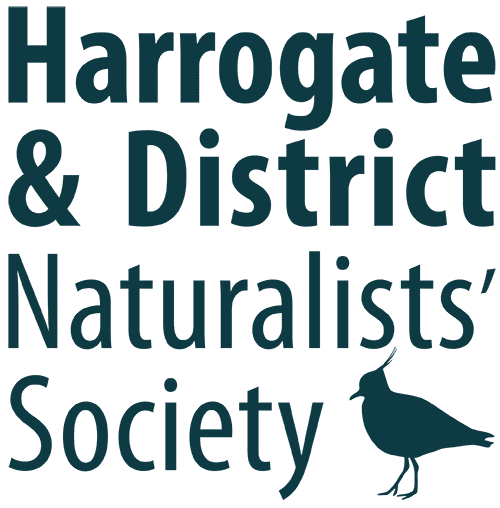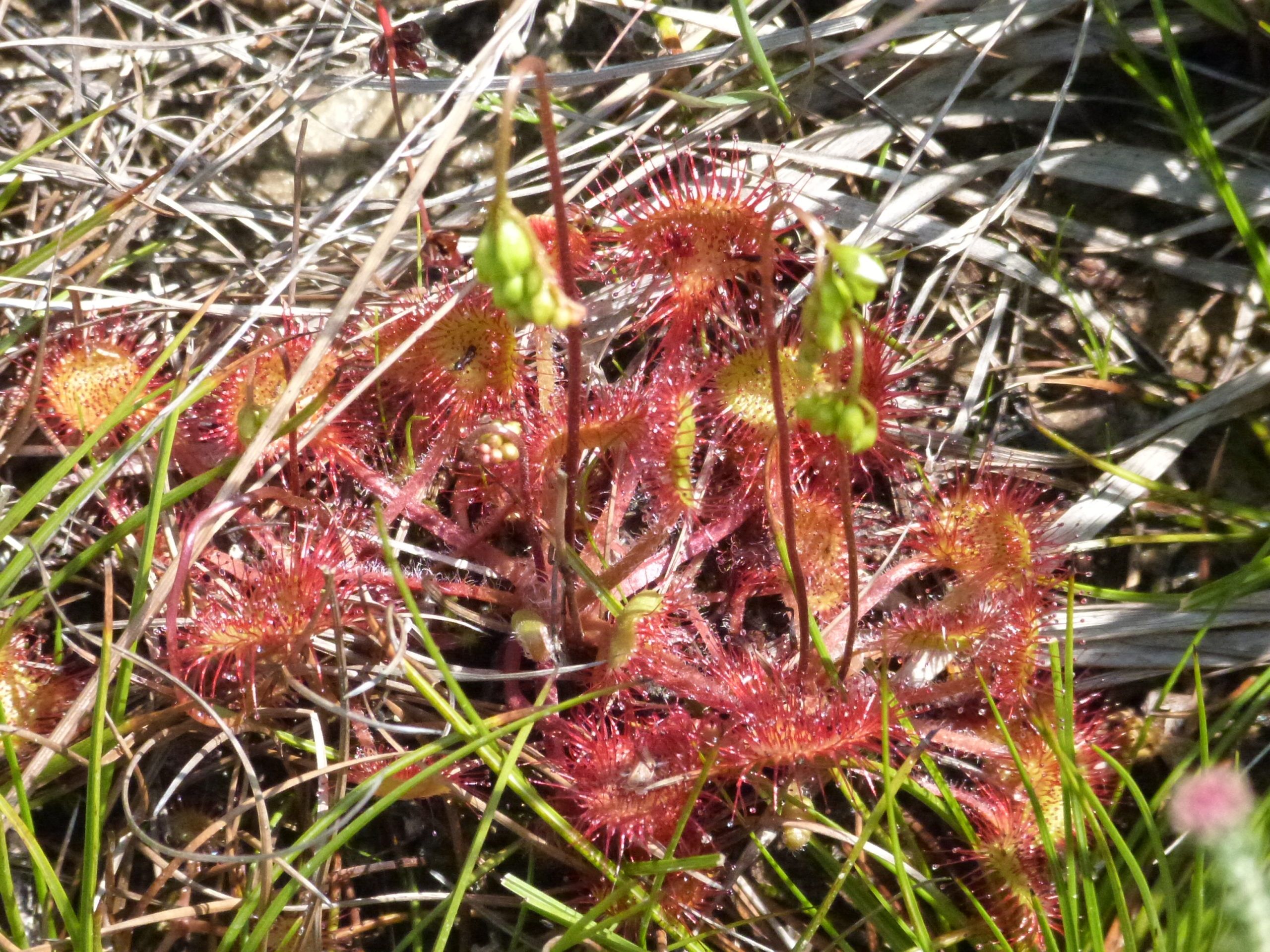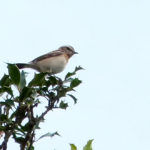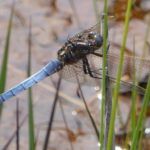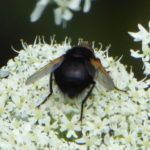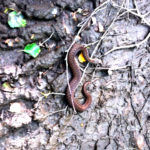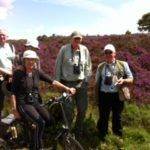
From this limestone grassland we crossed to the other side of the site to an area of typical heathland with Bilberry, Silver Birch and heather. Dan pointed out some of the plants we might otherwise have missed, such as Sheep’s Sorrel and Wavy Hair Grass; however there was again no sign of the elusive Turtledoves.We then proceeded to YWT’s Fen Bog nature reserve. This splendid site is part of the SSSI of Newtondale, and is also an SAC on account of its many special plant communities. Click HERE for website. (See http://www.ywt.org.uk/reserves/fen-bog-nature-reserve )
Before we even entered the reserve, a Small Pearl Bordered Fritillary was spotted and successfully netted by Colin; it was a beautiful male and settled co-operatively in Colin’s jar so that the black outlines of the cells on the fringes of its underwing could be seen, confirming that it was not a ‘large’. 6-spot Burnet moths were also plentiful and an Orange Underwing was seen. As we walked towards the reserve entrance a Dark Green Fritillary fluttered around us – 2 of our target species already achieved!The valley bottom of Fen Bog is dominated by Purple Moor grass, Bog Myrtle and Common Cotton grass, with stands of open water populated by Bog Bean and Lesser Spearwort.
The sloping sides of the valley are heather clad and we followed a reasonably dry peaty path, with muddy patches where we soon found Common Butterwort, Round Leaved Sundew, Twayblade, Heath Milkwort and Bog Asphodel. Cross-leaved Heath and Bell Heather gave a beautiful purple background against which we posed for a group photo.
There was an exciting flyover of Crossbills, presumably travelling between one stand of coniferous woodland and another – Colin counted 16. Both Sue and Will got glimpses of lizards – or were they the tail end of adders….?
We then ventured down the steeply sloping and heavily vegetated sides into the
valley bottom, where the tussocks and Bog Myrtle made for difficult going, especially for those with short legs!
The first small pool yielded a beautiful powder-blue Keeled Skimmer, the first of several. Dan wandered off botanizing and soon produced the Bottle Sedge and identified the scattering of Orchids as Heath Spotted. Sue then spotted a Whinchat which treated us to some good views.
We began to return along the valley and added Cranberry, the curious Marsh Arrowgrass and either Star- or Flea- sedge to our tally, then decided to try the northern corner of the valley bottom for the Large Heath, our only remaining target species. There was plenty of Common Cotton Grass, its food plant, and soon we encountered our first, passing close with a leisurely fluttering flight. Two more were seen as we exited the reserve.Our next stop was a brief visit to the Hole of Horcum, where our target species were ice creams and giant flies. Jack managed to spot the fly on top of a hogweed plant at the edge of the car park and a quick photo was snapped, from which Jim identified it as Tachina grossa
.The final destination was Ellerburn Bank, a tiny limestone grassland reserve nearby.Click HERE for website. Unfortunately, the map was far from clear and there were no signs so that we took a track which led only to a barley field.
But on the way Dan, who was walking in the grass down the centre of the track, disturbed an Adder! Colin deftly netted it and we were all able to examine it closely. The diamond markings were pale, indicating a female, and it was apparently not full-grown. It attempted to strike the inside of the net and its orange-red eyes and pale mouth could be easily seen. We all took a few steps back as Colin released it from the net but it lay poised to strike, immobile, for several minutes before tasting the air with its tongue and finally slithering away.
Half the party then reluctantly set off to return home, whilst the remaining three embarked on a determined attempt to find the missing nature reserve. Not only were they successful, but also added a possible Fly Orchid to the specialist plants tally, uncovered 3 Slow-worms of various sizes, found a very large Common Lizard and saw 2 Marbled Whites. Altogether a splendid and varied species list for the day.
Muff Upsall
NOTE: Click on thumbnail to see photos full size. Return here with the back button. Photo Editor.
